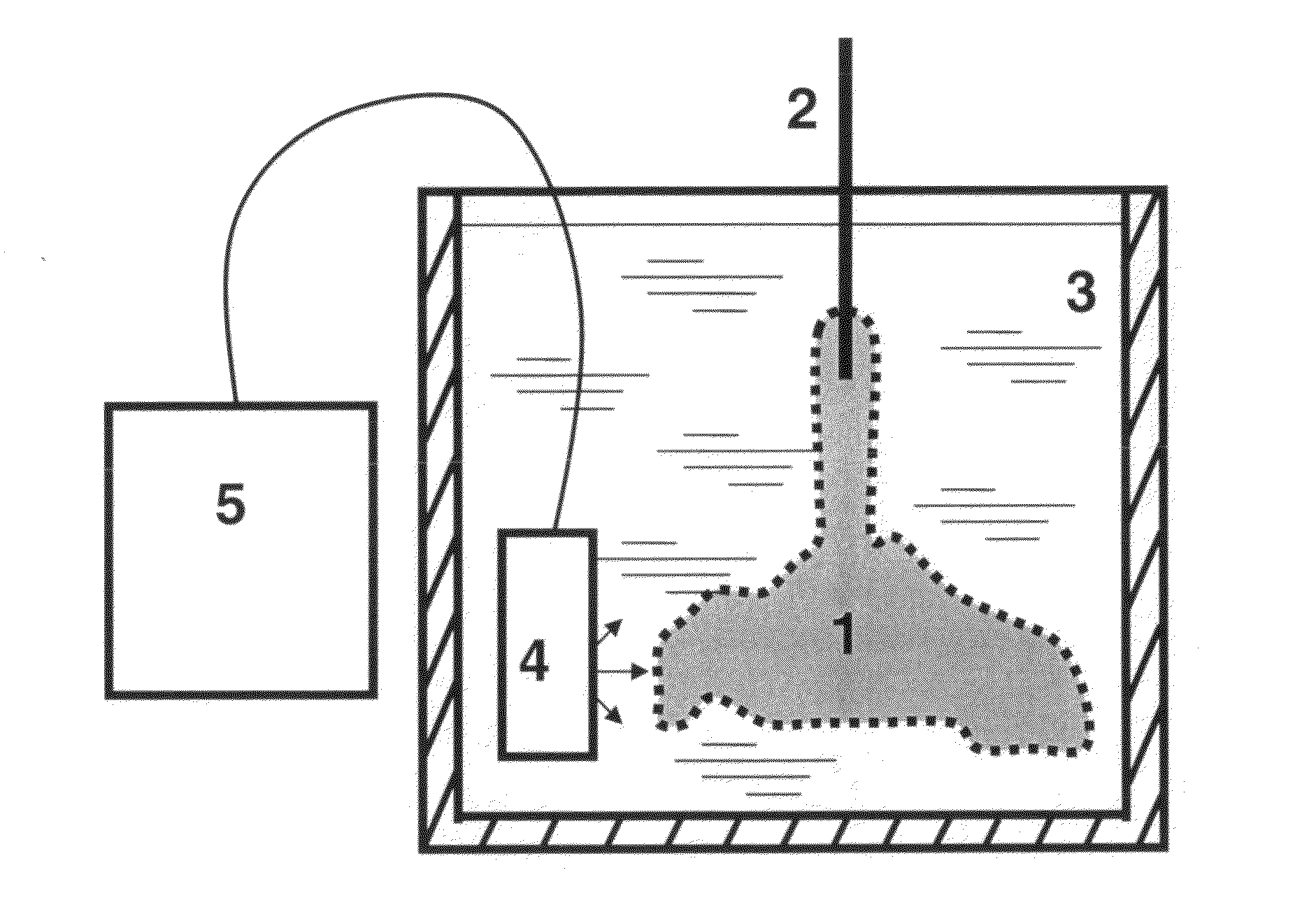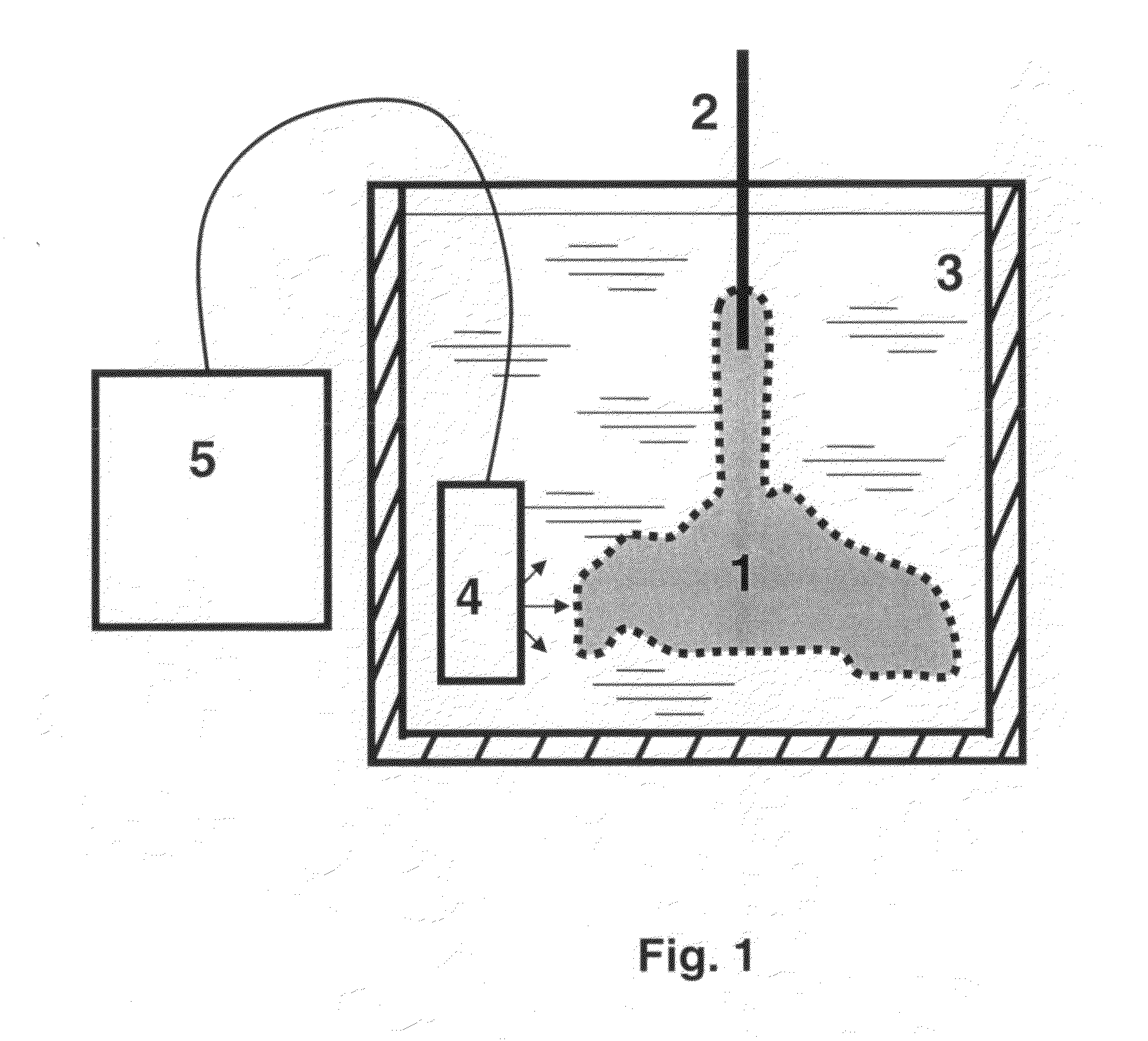Methods for augmentation collection of placental hematopoietic stem cells and uses thereof
- Summary
- Abstract
- Description
- Claims
- Application Information
AI Technical Summary
Benefits of technology
Problems solved by technology
Method used
Image
Examples
example 1
[0074]HSCs and HPCs of the current invention were collected from 30 human term placentas by use of different cell-liberating compounds. Following IRB approval and informed consent, human term placentas were obtained from healthy females following caesarian section. Freshly obtained human placentas, which had been subjected to a conventional cord blood recovery process by draining substantially all of the cord blood from the placenta were used. Cord blood was collected from umbilical cord using standard techniques. Placentas were first infused with an anticoagulant / vasodilator solution (Heparin 30 U / ml, papaverin 0.05 mg / ml) at a temperature of 20° C. For infusion procedures, artery and vein of umbilical cord were further cannulated and connected to a reservoir. Pressure in the umbilical cord artery and vein was constantly measured using Baxter pressure transducers (Protocol Systems, Portland, Oreg.). Constant temperature of infusate was maintained using heat exchange unit connected ...
example 2
[0078]Same experimental setup was used as described for Example 1. Placentas were infused with PBS+ (Experiment 1), placed in PBS-filled bath and subjected either to ultrasound field (1 MHz, 2 W / m2) for 1 hour (Experiment 2), or to intermittent electromagnetic field 0.5 gauss for 1 hour total. Results in similar format as for Example 2 are shown in Table 2. Both ultrasound and electromagnetic field increased the amount of HCSs and HPCs obtained from placental circulation.
TABLE 2Yield of TNC, CD34+CD45dim cells and colony-formingunit cells (CFU) obtained from placenta and relatedto cord blood unit from the same donor. Mean datais given (%), N = 5. (*P CD34+CD45dimTNCcellsCFU1. Unfusion of PBS+2415162. Ultrasound21210*245*3. Electromagnetic field34302*233*
example 3
Experiments were done in similar format as described for Example 1 and Example 2. Placentas were infused either with PBS+, PBS+ with AMD 3100 (3 mg / L), or PBS+ and BIO5192 (1 mg / ml), incubated for 8 hours and intermittently subjected to ultrasound filed at 1 MHz for 2 hours total. Results are shown in Table 3.
[0079]
TABLE 3Yield of TNC, CD34+CD45dim cells and colony-forming unit cellsobtained from placenta and related to cord blood unit from the samedonor. Mean data is given (%), N = 5. (*P CD34+ CD45TNCdim cellsCFU1. Infusion of PBS+2314182. AMD3100 +45456*520*Utrasound3. BIO5192 +38568*563*Ultrasound4. PBS+ +32324*231*Utlrasound
[0080]The obtained results indicate, that infusion of placental vessels with composition containing cell liberating compounds followed by incubation with this composition, as well as treatment of placentas with ultrasound and electromagnetic fields allows to increase yield of HSCs, HPSs, and colony-forming unit cells as compared to corresponding cord blood u...
PUM
 Login to View More
Login to View More Abstract
Description
Claims
Application Information
 Login to View More
Login to View More - R&D
- Intellectual Property
- Life Sciences
- Materials
- Tech Scout
- Unparalleled Data Quality
- Higher Quality Content
- 60% Fewer Hallucinations
Browse by: Latest US Patents, China's latest patents, Technical Efficacy Thesaurus, Application Domain, Technology Topic, Popular Technical Reports.
© 2025 PatSnap. All rights reserved.Legal|Privacy policy|Modern Slavery Act Transparency Statement|Sitemap|About US| Contact US: help@patsnap.com



